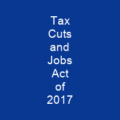Unveiling the Economic Policy of Trump’s First Term
The economic policy of the first Trump administration was a complex mix of tax cuts, deregulation, and trade protectionism. But did these policies truly deliver on their promises?
Upon taking office in 2017, President Donald Trump promised to revitalize America’s economy through sweeping changes. His administration aimed at reducing federal taxes, repealing the Affordable Care Act (ACA), implementing trade barriers, deregulating industries, and addressing the burgeoning national debt.

Reducing Taxes and Increasing Deficits
The Tax Cuts and Jobs Act (TCJA), signed into law in December 2017, was a cornerstone of the Trump administration’s economic strategy. It aimed to reduce corporate tax rates from 35% to 21%, eliminate personal exemptions, and increase standard deductions. However, these changes did not lead to the expected boost in GDP or employment growth.
According to The Economist, the short-term impact of the tax cut was less than stellar. The magazine noted that Mr. Trump’s economic stewardship was “less stellar than his supporters claim.” Despite the reduction in corporate taxes, businesses used much of the savings for stock buybacks rather than investing in new projects or hiring.
Healthcare and the ACA
The administration’s efforts to repeal the Affordable Care Act (ACA) were met with significant challenges. The CARES Act, signed into law in March 2020, aimed to address lost income for workers and assist businesses during the pandemic. However, the act contributed to a large budget deficit.
Factcheck.org reported that Trump’s claims about his economic record were often false or exaggerated. For instance, GDP growth under Trump (2.9%) was the same as in 2015, and job creation was slower compared to the Obama administration’s final years. The number of uninsured increased from 27.3 million in 2016 to 29.6 million in 2019, with more people becoming uninsured due to cuts in cost-sharing reductions (CSR) payments.
Trade and Manufacturing
The administration’s trade policies were marked by a protectionist approach. The North American Free Trade Agreement (NAFTA) was renegotiated as the USMCA, but its impact on the economy was minimal. Tariffs imposed on Chinese imports led to retaliatory tariffs from China and other trading partners.
The trade war with China did not achieve its primary objective of reviving American manufacturing or resulting in factory production reshoring. Instead, it caused significant uncertainty for businesses and consumers alike. The stock market, while initially boosted by the tax cuts, entered a bear market due to various factors including interest rate hikes and the pandemic.
Regulation and Deregulation
The Trump administration’s approach to regulation was mixed. While it aimed at reducing regulatory burdens on businesses, some argue that deregulation can have unintended consequences. The Environmental Protection Agency (EPA) saw a reduction in enforcement efforts, which could harm public health and the environment.
Conclusion
The economic policies of Trump’s first term were ambitious but largely unsuccessful in achieving their goals. Despite reducing taxes and increasing spending, the administration failed to significantly boost GDP or employment growth. The national debt increased by 39%, reaching $27.75 trillion by the end of his term. While some groups benefited from tax cuts, others faced higher costs due to reduced healthcare subsidies and increased unemployment.
As we reflect on Trump’s economic legacy, it becomes clear that the promises made during his campaign were not fully realized. The complex interplay of tax policy, trade agreements, and regulatory changes left many Americans questioning whether their lives improved under his administration.
The economic policies of the first Trump administration were a mixed bag, with some successes and significant failures. While the stock market saw gains, real wages stagnated, and income inequality widened. The journey through these policies leaves us with more questions than answers about what truly drives economic growth in America.
You want to know more about Economic policy of the first Donald Trump administration?
This page is based on the article Economic policy of the first Donald Trump administration published in Wikipedia (retrieved on January 24, 2025) and was automatically summarized using artificial intelligence.





